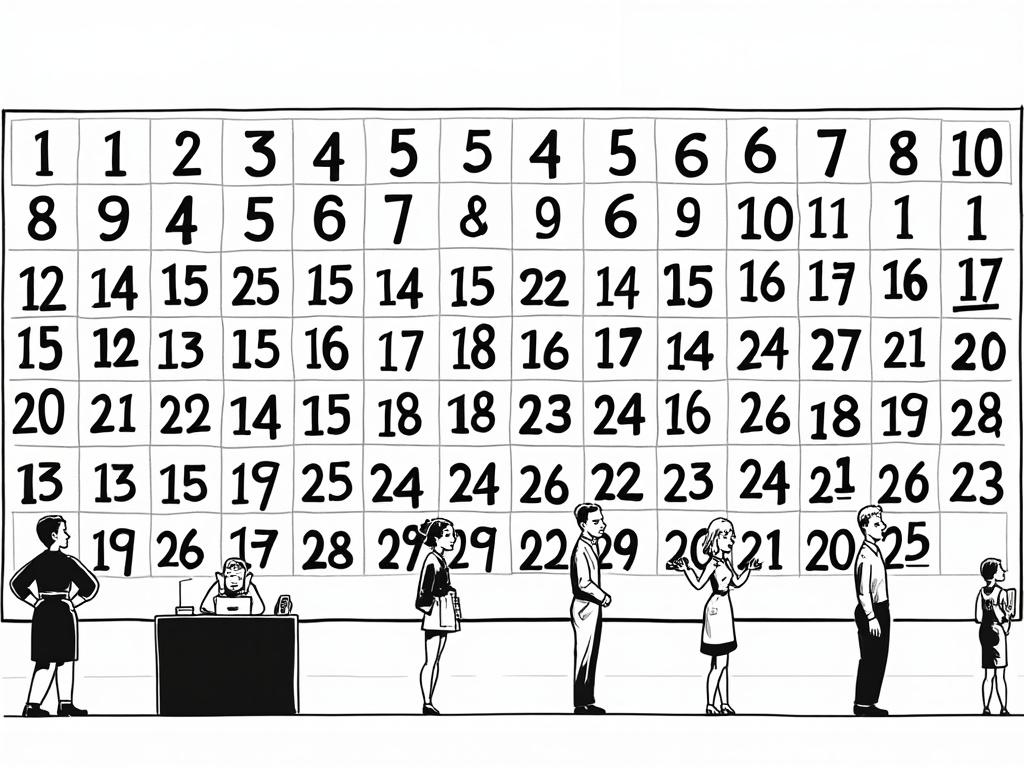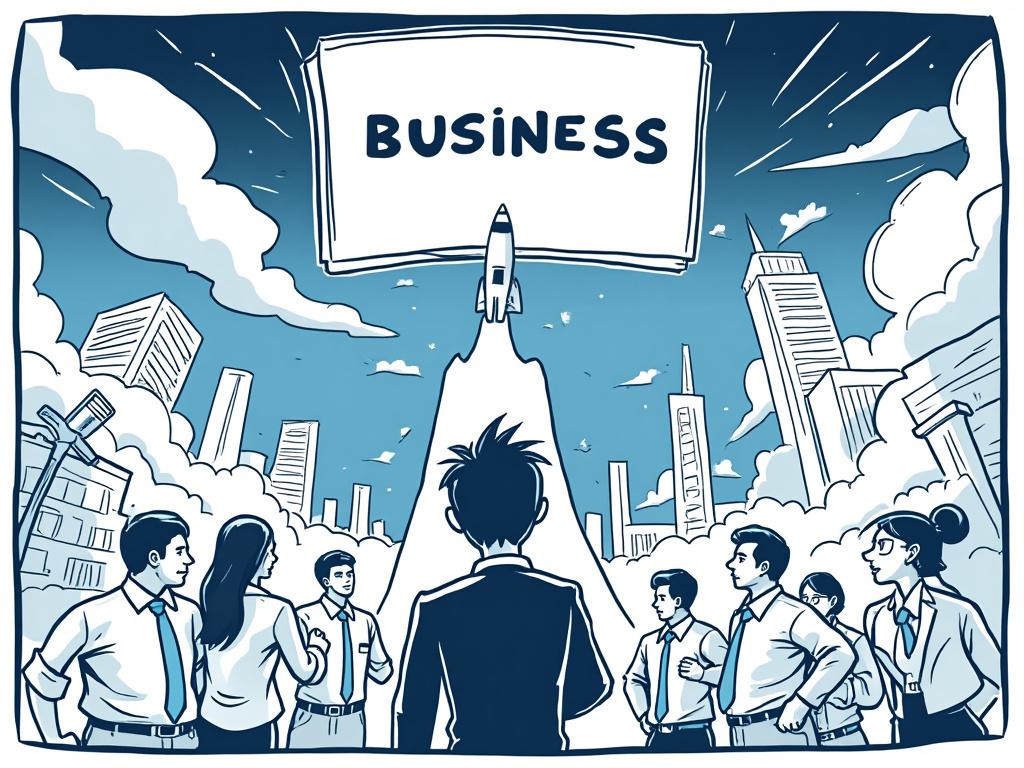
Sinopharm Vaccine in the UAE: Efficacy, Real-World Performance, and Global Implications
Reading time: 16 minutes
Table of Contents
- Introduction to Sinopharm in the UAE
- Sinopharm Vaccine Development and Mechanism
- Clinical Trial Results and Initial Efficacy Data
- UAE Implementation Strategy
- Real-World Efficacy Analysis
- Comparative Analysis with Other Vaccines
- Challenges and Limitations
- Global Context and Diplomatic Implications
- Future Directions: Boosters and Variants
- Strategic Insights: Lessons from the UAE Approach
- Frequently Asked Questions
Introduction to Sinopharm in the UAE
When the UAE became the first country outside China to approve the Sinopharm vaccine in December 2020, they embarked on what would become one of the most ambitious vaccination campaigns globally. But this wasn’t just a public health decision—it represented a strategic alignment at the intersection of science, geopolitics, and economic pragmatism.
The Emirates’ early adoption of Sinopharm’s inactivated vaccine raised eyebrows among some Western observers, especially given the limited published data at the time. Yet this decision would eventually help propel the UAE to among the highest vaccination rates worldwide, with over 90% of the population fully vaccinated by early 2022.
“We faced an unprecedented situation that required bold decisions,” explains Dr. Farida Al Hosani, Official Spokesperson for the UAE Health Sector. “Our leadership prioritized early access to safe vaccines while maintaining rigorous scientific standards through local clinical trials.”
The story of Sinopharm in the UAE offers valuable insights into how nations can navigate public health emergencies through strategic partnerships, local scientific validation, and adaptive implementation—particularly when established systems prove insufficient.
Sinopharm Vaccine Development and Mechanism
The Science Behind the Vaccine
Unlike the mRNA technology employed by Pfizer and Moderna, Sinopharm utilized a well-established approach—inactivated virus vaccines. This method has been used for decades to create vaccines against diseases like polio and hepatitis A.
The technical process involves:
- Growing large quantities of SARS-CoV-2 virus in laboratory conditions
- Chemically inactivating the virus with beta-propiolactone to render it non-infectious
- Purifying the inactivated virus
- Adding an aluminum-based adjuvant to enhance immune response
This approach presents distinct advantages in resource-limited settings. Dr. Ahmed Al Sharif, a virologist involved in the UAE trials explains: “The inactivated virus platform doesn’t require ultra-cold storage infrastructure, making distribution more feasible across diverse environments. This was critical for the UAE’s strategy to vaccinate not just cities but remote communities.”
Development Timeline and Collaboration
Sinopharm’s vaccine development timeline moved at unprecedented speed while maintaining established safety protocols:
- January 2020: Virus isolation and vaccine development began
- April 2020: Preclinical studies completed
- June 2020: Phase I/II clinical trials initiated in China
- July 2020: UAE Phase III trials launched in partnership with G42 Healthcare
- September 2020: Emergency use authorization in UAE for frontline workers
- December 2020: Full approval in UAE following interim analysis
The UAE-China collaboration exemplified how international scientific partnerships could accelerate vaccine development while maintaining scientific integrity. The Emirates contributed over 31,000 volunteers from 125 nationalities to the Phase III trials—creating one of the most diverse clinical trial populations globally.
Clinical Trial Results and Initial Efficacy Data
Phase III Trial Design and Demographics
The Sinopharm vaccine’s Phase III trial in the UAE was one of the largest COVID-19 vaccine trials globally, with several distinctive features:
- Multi-center design spanning Abu Dhabi, Sharjah, and other emirates
- 31,000+ volunteers from 125+ nationalities
- Age range: 18-60+ years (including subgroups with comorbidities)
- Gender distribution: 85% male, 15% female (reflecting UAE demographics)
- Double-blind, randomized, placebo-controlled methodology
This diverse participant pool proved invaluable for assessing efficacy across different ethnic groups—a critical consideration given the UAE’s extraordinarily diverse population with over 200 nationalities.
The trial included both Chinese-manufactured vaccine doses and, importantly, doses produced at the new Hayat Biotech facility in the UAE—establishing local manufacturing capacity that would later prove strategically significant.
Initial Efficacy Claims and Data Transparency
When the UAE Ministry of Health and Prevention announced 86% efficacy against COVID-19 infection in December 2020, the scientific community noted both the promising result and the limited published data supporting it. The announcement stated:
- 86% efficacy against COVID-19 infection
- 100% protection against moderate and severe disease
- 99% seroconversion rate of neutralizing antibodies
However, this initial announcement wasn’t accompanied by peer-reviewed publication—a departure from Western vaccine developers’ approach. Dr. Mohammed Al Qahtani, a UAE-based immunologist, contextualizes this: “While the standard scientific process prioritizes peer review before implementation, the pandemic created justified urgency. The UAE’s approach balanced speed with safety by conducting local trials while continuously monitoring outcomes.”
When Sinopharm’s data was eventually published in JAMA in May 2021, it reported 78.1% efficacy against symptomatic COVID-19 and 100% against severe disease—slightly different from the UAE’s earlier announcements. This discrepancy highlighted the challenges of real-time scientific communication during a crisis.
UAE Implementation Strategy
The UAE’s implementation of the Sinopharm vaccine demonstrated exceptional logistical capabilities and strategic foresight, transforming the country into a case study for effective mass vaccination.
Prioritization and Rollout Phases
The Emirates implemented a clearly defined prioritization framework:
- Phase 1 (September-December 2020): Emergency use for frontline healthcare workers and essential service providers
- Phase 2 (December 2020-January 2021): Elderly citizens, residents with chronic conditions, and people of determination
- Phase 3 (February-April 2021): General adult population (starting with high-density areas)
- Phase 4 (May 2021 onwards): Adolescents 12-17 years
This phased approach, combined with exceptional infrastructure development, allowed the UAE to achieve vaccination rates that outpaced most developed nations. By establishing over 200 vaccination centers nationwide—including drive-through facilities capable of processing 600 vehicles daily—they minimized access barriers.
Ahmed Al Nuaimi, a Dubai resident, recalls: “I received a text message inviting me to book my appointment. The entire process took less than 30 minutes, from arrival to observation period. The efficiency was remarkable—no paperwork, just scan your Emirates ID and proceed.”
Domestic Production and Supply Chain
Perhaps the most forward-thinking element of the UAE’s strategy was establishing domestic vaccine production. The joint venture between Sinopharm and G42 Healthcare created “Hayat Biotech”—a facility in Abu Dhabi capable of producing 200 million doses annually.
This localized production capability provided several strategic advantages:
- Supply chain security during global vaccine shortages
- Quality control aligned with local regulatory frameworks
- Regional distribution hub capabilities
- Technology transfer and capacity building for future health security
As Dr. Nawal Al Kaabi, Chairperson of the National COVID-19 Clinical Management Committee, noted: “Establishing local production wasn’t just about addressing immediate needs; it was about building resilience against future public health threats.”
Real-World Efficacy Analysis
While clinical trials provide controlled efficacy data, real-world effectiveness studies offer critical insights into how vaccines perform across diverse populations and against evolving virus variants.
UAE Population-Level Data
The UAE’s comprehensive digital health infrastructure enabled robust real-world effectiveness tracking. Data from the first six months of vaccination (January-June 2021) revealed:
- 93% reduction in hospitalization rates among fully vaccinated individuals
- 89% reduction in ICU admission rates
- 95% protection against death from COVID-19
- 72-76% protection against symptomatic infection (pre-Delta variant)
These figures aligned with or exceeded the initial trial data, particularly for severe outcomes. Dr. Walid Abbas, an infectious disease specialist at Cleveland Clinic Abu Dhabi, explains: “The most meaningful metric isn’t preventing all infections but preventing serious illness and death. By this critical measure, Sinopharm performed exceptionally well during the early vaccination phases.”
Case Study: Abu Dhabi’s Healthcare Workers
A cohort study of 12,830 healthcare workers in Abu Dhabi who received Sinopharm vaccination between December 2020 and March 2021 provided valuable insights:
Among fully vaccinated healthcare workers:
- 0.3% developed symptomatic breakthrough infections
- Only 2 required hospitalization (both with significant comorbidities)
- No ICU admissions or deaths occurred
- Mean time to breakthrough infection: 93 days post-second dose
This healthcare worker study was particularly significant as it represented a high-exposure population during pre-variant dominant periods, demonstrating robust protection in real-world settings.
Comparative Analysis with Other Vaccines
Understanding how Sinopharm compares to other vaccine platforms provides crucial context for evaluating the UAE’s vaccine strategy.
| Vaccine | Technology | Initial Efficacy (Symptomatic) | Severe Disease Protection | Storage Requirements | Doses Required |
|---|---|---|---|---|---|
| Sinopharm | Inactivated Virus | 78-86% | 100% | 2-8°C (Standard refrigeration) | 2 |
| Pfizer-BioNTech | mRNA | 95% | 100% | -70°C (Ultra-cold) | 2 |
| Oxford-AstraZeneca | Viral Vector | 70-76% | 100% | 2-8°C (Standard refrigeration) | 2 |
| Moderna | mRNA | 94% | 100% | -20°C (Freezer) | 2 |
| Johnson & Johnson | Viral Vector | 66% | 85% | 2-8°C (Standard refrigeration) | 1 |
Antibody Response Comparison
Immunological studies comparing antibody responses between vaccine platforms revealed interesting patterns:
A UAE-based study measuring neutralizing antibody titers at 3 months post-vaccination showed:
Neutralizing Antibody Levels (Geometric Mean Titers)
Data from UAE Ministry of Health comparative study, March-June 2021
While mRNA vaccines generated higher antibody levels, Dr. Khalid Alameri from Sheikh Khalifa Medical City notes: “Antibody levels aren’t the complete picture. Cellular immunity, which is harder to measure but crucial for long-term protection, appears robust across vaccine platforms. The real-world effectiveness against severe outcomes supports this broader immune protection.”
Variant Protection Differences
As variants emerged, differences between vaccine platforms became more pronounced:
- Original strain: All vaccines showed comparable protection against severe disease
- Alpha variant: Minimal impact on efficacy across platforms
- Beta variant: Reduced neutralization across all vaccines; mRNA platforms maintained higher effectiveness
- Delta variant: Significantly reduced neutralization for all vaccines; breakthrough infections increased but severe disease protection remained strong
This evolving landscape influenced the UAE’s decision to offer boosters earlier than many Western nations, beginning in May 2021 for Sinopharm recipients—a decision that would later be validated as other countries followed suit.
Challenges and Limitations
Despite impressive overall outcomes, the UAE’s Sinopharm implementation faced several significant challenges that required adaptive responses.
Breakthrough Infections and Waning Immunity
By mid-2021, data indicated potential waning protection against symptomatic infection among some Sinopharm recipients:
- Breakthrough infection rates began increasing around 4-6 months post-vaccination
- Adults over 60 showed more rapid decline in antibody levels
- Healthcare workers and those with high exposure experienced higher breakthrough rates
Sara Khan, a 42-year-old teacher in Dubai, shares her experience: “I received Sinopharm in January 2021 and tested positive in July despite being careful. My symptoms were mild—just fatigue and headache for three days. I was grateful for the protection against severe illness, but it was concerning to contract it despite being fully vaccinated.”
These breakthrough cases, while generally mild, created public perception challenges and prompted the booster strategy. The UAE rapidly implemented a mix-and-match approach, offering Pfizer boosters to Sinopharm recipients—becoming one of the first countries to officially adopt this strategy.
Data Transparency Issues
International scientific observers raised concerns about limited peer-reviewed publications detailing Sinopharm’s clinical data. While the UAE conducted thorough local trials, the lag in comprehensive published results created skepticism in some quarters.
Dr. Jessica Miller, an epidemiologist who consulted on vaccine rollouts globally, notes: “The UAE generated robust internal data that guided their decision-making effectively. However, the limited early peer-reviewed publications created unnecessary skepticism about a vaccine that has since proven its value in protecting populations.”
By mid-2021, more comprehensive data appeared in journals like JAMA and The Lancet, validating the UAE’s approach retrospectively but highlighting the importance of scientific communication during public health emergencies.
Global Context and Diplomatic Implications
The UAE’s Sinopharm implementation extended beyond public health into the realm of vaccine diplomacy and global influence.
As wealthy Western nations secured most early mRNA vaccine supplies, the UAE leveraged its Sinopharm access and eventual production capacity to strengthen diplomatic ties across the developing world. By mid-2021, UAE-manufactured Sinopharm doses reached over 30 countries, particularly in Africa and the Middle East.
Dr. Abdulrahman Al Jaber, an international relations analyst at UAE University, explains: “The Emirates transformed a potential vulnerability—lack of access to Western vaccines—into a strategic advantage through foresight and investment. While many nations waited for COVAX deliveries that were significantly delayed, the UAE provided tangible vaccine assistance to strategic partners.”
This “middle power” health diplomacy yielded several benefits:
- Strengthened bilateral relationships with recipient nations
- Enhanced the UAE’s soft power and international standing
- Positioned Abu Dhabi as a regional health technology hub
- Created new economic partnerships in healthcare and biotechnology
The Emirates also demonstrated pragmatic diplomacy by eventually approving and securing multiple vaccine platforms—including Pfizer, AstraZeneca, and Sputnik—creating a diversified portfolio that balanced geopolitical relationships while optimizing public health outcomes.
Future Directions: Boosters and Variants
The UAE’s experience with Sinopharm continues to evolve as the pandemic enters new phases and variants emerge. The original two-dose Sinopharm regimen has given way to a more complex approach focused on personalized protection.
Booster Strategy Evolution
The Emirates’ booster strategy has progressed through several evidence-based iterations:
- First phase (May 2021): Third Sinopharm dose offered to vulnerable populations
- Second phase (July 2021): Pfizer/BioNTech boosters offered to Sinopharm recipients
- Third phase (September 2021): Universal booster recommendation regardless of primary series
- Fourth phase (January 2022): Second boosters (fourth doses) for vulnerable populations
Dr. Hanan Al Suwaidi, who coordinated booster campaigns in Abu Dhabi, explains the rationale: “Our approach followed the data. The mix-and-match strategy produced particularly robust immune responses, especially in older adults. We saw neutralizing antibody levels increase 4-6 fold when Pfizer followed Sinopharm, compared to homologous boosting.”
Variant-Specific Considerations
Laboratory studies of Sinopharm’s effectiveness against emerging variants have shown mixed results:
- Delta variant: Moderate reduction in neutralization; boosters restored protection
- Omicron variant: Significant reduction in neutralization; hybrid immunity (vaccination plus infection) provided broader protection
These findings influenced the UAE’s strategy of universal boosting and eventually led to acceptance of a “living with COVID” approach focused on preventing severe outcomes rather than all infections.
Looking forward, UAE health authorities are considering annual vaccination approaches, similar to influenza, with potentially tailored recommendations based on prior infection history, age, and risk factors.
Strategic Insights: Lessons from the UAE Approach
The UAE’s Sinopharm implementation offers valuable insights for global health security and pandemic preparedness. While no approach was perfect during this unprecedented crisis, several strategic elements deserve highlighting.
Leveraging Strengths: What Worked
The Emirates’ most successful strategies included:
- Pragmatic vaccine portfolio diversification that balanced access, efficacy, and logistics
- Local clinical trials that validated global data in the context of a highly diverse population
- Investment in domestic production capacity that secured supply chains and created regional influence
- Robust digital infrastructure that enabled real-time monitoring and evidence-based adjustments
- Cultural competence in vaccine communication that addressed diverse population needs
Fahad Al Marzooqi, who oversaw logistics for vaccination centers in the Northern Emirates, shares a practical example: “We created multi-language information materials in 12 languages for our diverse population. But equally important, we trained staff to address culture-specific concerns. For some communities, having a same-gender vaccinator was important; for others, specific religious authority endorsements mattered. This cultural competence significantly improved uptake.”
Adapting Under Uncertainty
Perhaps the most valuable lesson from the UAE experience is how to make evidence-based adjustments under scientific uncertainty:
- Implementing early boosters when breakthrough cases emerged
- Adopting mix-and-match approaches before global consensus
- Adjusting eligibility criteria based on real-time effectiveness data
- Balancing transparent communication about limitations while maintaining public confidence
Dr. Farida Al Hosani reflects: “In a pandemic, perfect information doesn’t exist. The key is having robust monitoring systems that detect changing patterns quickly, scientific expertise to interpret those patterns, and operational agility to adapt. The UAE’s size and governance structure allowed us to implement changes rapidly when evidence indicated they were needed.”
This adaptive capability—combining scientific monitoring with operational flexibility—represents perhaps the most transferable insight from the UAE’s experience with Sinopharm.
Navigating Forward: Beyond Initial Vaccination
The Sinopharm journey in the UAE isn’t just a pandemic case study—it represents a fundamental shift in how the country approaches public health security and biotechnology development. As we look ahead, several strategic pathways are emerging from this experience.
Building Health Security Infrastructure
The Emirates has leveraged its Sinopharm experience to create lasting health security capabilities:
- Expansion of Hayat Biotech to produce multiple vaccine types
- Development of mRNA production capacity through new partnerships
- Creation of the UAE Genomics Council to enhance variant surveillance
- Establishment of emergency use authorization frameworks for future threats
These investments position the UAE not merely as a vaccine recipient but as a regional biopharmaceutical hub capable of responding to future health threats independently.
Your Personal Protection Strategy
For individuals who received Sinopharm vaccination in the UAE, current evidence suggests these practical steps:
- If you haven’t received a booster dose, consider doing so, especially if you’re over 50 or have health conditions
- A heterologous booster (different platform from your primary series) appears to provide broader protection
- Maintain reasonable precautions in high-risk settings, particularly during variant surges
- If traveling internationally, check destination requirements as vaccine recognition varies
- Keep vaccination records accessible through the Al Hosn app for future reference
The protection you’ve received has proven highly effective against severe outcomes—the most important measure—even as the virus continues to evolve.
As we navigate beyond the acute phase of the pandemic, the UAE’s experience with Sinopharm illuminates a broader truth: effective public health requires both scientific rigor and strategic adaptability. By embracing both, the Emirates transformed a potential vulnerability into a national strength.
What other critical health infrastructure might nations need to develop now to prepare for future pandemic threats? The answer may well determine global health security for decades to come.
Frequently Asked Questions
How does Sinopharm’s efficacy compare to mRNA vaccines against new variants?
Laboratory studies show that Sinopharm generates lower neutralizing antibody levels against variants like Omicron compared to mRNA vaccines. However, real-world data from the UAE demonstrates that after a booster dose (particularly an mRNA booster following Sinopharm primary series), protection against severe disease remains high across variants. The gap in protection against symptomatic infection is more pronounced, with mRNA vaccines showing higher effectiveness. This is why the UAE moved to a mixed vaccine strategy, offering Pfizer boosters to Sinopharm recipients starting in mid-2021.
If I received Sinopharm in the UAE, will it be recognized for international travel?
Recognition varies by country and continues to evolve. Most Gulf Cooperation Council countries, many Asian nations, and several European countries recognize Sinopharm vaccination, particularly if completed with a booster dose. However, some nations—particularly in North America and parts of Europe—may not officially recognize Sinopharm for entry exemptions. The UAE’s Al Hosn app provides internationally verifiable vaccination certificates, and many Sinopharm recipients have successfully supplemented their vaccination with internationally recognized vaccines when needed for travel. Always check your destination’s current requirements before traveling.
How long does protection from Sinopharm last, and when should I consider another booster?
Studies from the UAE show that antibody levels begin declining 4-6 months after the second Sinopharm dose, particularly in adults over 60 and those with compromised immune systems. However, protection against severe disease appears more durable. Current UAE health authority guidance recommends a booster dose 6 months after completing the primary series, with priority for vulnerable populations. For those who already received a booster, additional doses are currently recommended only for immunocompromised individuals, healthcare workers with high exposure risk, and adults over 60 with health conditions. As the virus continues evolving, booster recommendations may shift toward an annual schedule similar to influenza vaccination.

Article reviewed by James Callahan, Visionary Real Estate & Wealth Strategist, on May 15, 2025




